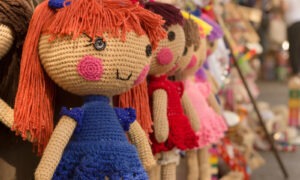We live in a world where everything gets smaller. Cars, gaming systems, phones, computers, processors and mp3 devices. “Compact” is a word used to describe all the advances created to enrich our lives. For instance the first computers took up entire rooms. Today computers that are much faster and have much more storage space can fit in the palm of your hand. While most celebrate the art of getting small there are those who fear small things. This fear is known as Microphobia.
It may be a subconscious phenomenon, but spiders and mice are small, yet they are often feared. Bats and bees are small, yet the same fear of these small things exist.
What Causes Microphobia?
This fear is often the result of modeled behavior. In other words the fear can be a direct result of watching someone else who struggles with the fear. The potential for phobic development is often tied to how trusted the individual is in whom you observe the fear. The more you trust their judgment the greater the likelihood that you will adopt their perspective on the fear of small things.
The idea that something can so completely catch you off guard can be another contributing factor to the development of fear. While there are differences this can be as true of a running mouse as it is of a new cell phone. In each case there is a profound sense of the unknown that causes many to fear small objects – even those objects that may be beneficial in most situations.
Symptoms of Microphobia
As with most phobias the fear of small things will find an individual avoiding those things that are reduced in size. Appliance may be older and larger than what are presently available. Phones will be larger with minimal functions. Houses and cars may be larger. This phobic personality will not like surprises so having items that are large enough to easily see will provide them with a sense of comfort and reassurance.
- Air hunger
- Trembling
- Panic attacks
- Loss of control
- Nausea
- Elevated heart rate
- Sweating
- Dizziness
- Crying
- Screaming
- Irrational response
Most who experience this fear are embarrassed by their response, but they are often ill equipped to stop their response.
How to Overcome Microphobia
It may be reasonable to come to terms with the understanding that fearing smaller objects may not make sense in light of the fact that you can either control smaller objects or influence their direction. Knowing this is a great start, but rarely is enough to stop the fear.
A therapist can help you redirect the reaction by teaching you to send data to to logic part of your brain without always allowing the emotional part of your brain to dictate a response. This is important because every individual does have the ability to manage a response. This is enhanced when the individual understands why they fear. A therapist can also be instrumental in learning the reasons for the existence of the fear.
The fear of small things is also referred to as:
- Small things fear
- Small things phobia
- Microphobia





















